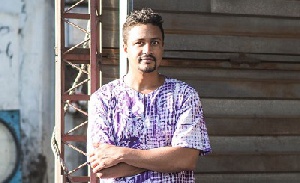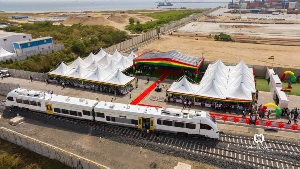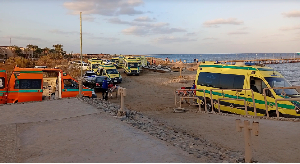In the heart of Accra lies Agbobloshie, a sprawling scrapyard once tagged as one of most toxic places on earth.
A former wetland, Agbobloshie has become a dumpsite for electronic waste products from around the globe.
The scrapyard is also inhabited by some 10,000-20,000 youth who sift through the scrap metal to salvage mostly copper wires and still-functional parts of discarded electronic equipment.
Most of these parts are subsequently recycled into components in creating low-cost equipment, or are sold to steelworkers and copper refineries.
While Agbobloshie has been labeled a growing crisis by media around the world, Yaw Dankwah (DK) Osseo-Asare, lecturer at Ashesi, and co-lead of the Agbogbloshie Makerspace Platform (AMP) has found cause for a new Agbobloshie story.
He believes that beneath the layers of toxic scrap and e-waste lies the possibility of a manufacturing district. Through AMP, his team seeks to reinvent the scrapyard into a site for maker spaces and centers of digital fabrication.
“We see an urban-scale open-air manufactory—an action-oriented maker ecosystem where materials and components reclaimed from end-of-life equipment feature as inputs for making new products,” he explains. “Through Agbobloshie Makerspace Platform, we want to address the ecosystem of what’s happening in Agbobloshie.”
With funding from the Rockefeller Centenniel Innovation Challenge Award, DK and AMP co-lead Yasmine Abbas seek to model their current project, tagged AMP Spacecraft, off the underlying maker culture at Agbobloshie.
The Spacecraft is a project to build modular, movable, customizable and expandable hubs where Agbogbloshie’s makers can work and also collaborate with other professionals.
The space will also be hub for creating toolsets and toolboxes various artisans and scrap dealers can use in their craft, while improving efficiency and reduce environmental concerns.
“It’s actually a project to connect people who do recycling and making in the informal sector with students and recent graduates in Science Technology Engineering and Math, to innovate, to make new tools and for capacity for transforming this whole environment,” he said.
Currently underway in Agbogbloshie is a prototype of the space - a steel structure built out of materials that are either made in Ghana, or largely sourced and recycled from the Agbogbloshie scrapyard. Building alongside scrap dealers and makers in Agbobloshie, they are able to observe and involve them in creating a space that is relatable and useful.
“We’ve taken a participatory design approach, and so we work with people in the community to learn more about what they‘re doing.” DK explained. “Also in the process, we get to inform them about what we’re doing and involve them in the design process. We’re trying to understand the ecosystem to transform it into a network for local distribution manufacturing and digital fabrication.”
While the AMP is a youth-driven project to promote maker ecosystems and build a network of design and fabrication shops across Ghana and Africa, Agbogbloshie presents unique possibilities. “How can we do this recycling in a better way, so that we’re not hurting the environment, and at the same time be able to make money?” said DK. “It’s not just about trying to fix a problem here per se, but its about building startups and projects that can be interlinked with a place like this.”
General News of Wednesday, 26 October 2016
Source: ashesi.edu.gh

















